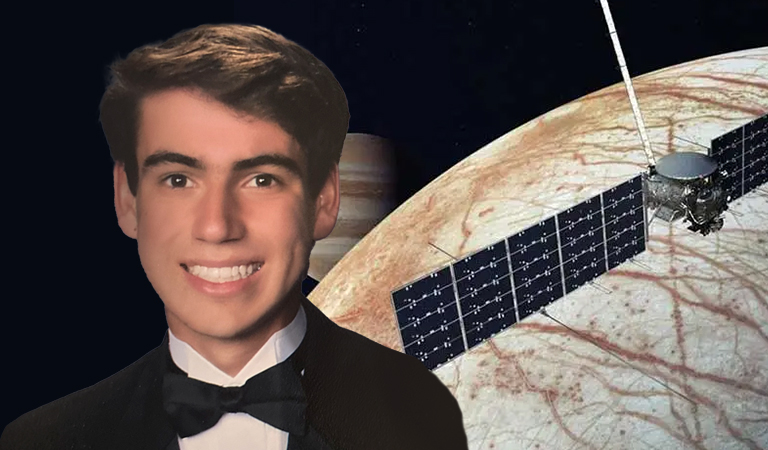Harvey Mudd College Junior Selected for NASA’s Europa ICONS Internship
May 14, 2024
The National Aeronautics and Space Administration has selected Harvey Mudd College junior Daniel Voyles as one of 40 undergraduate students who will participate in the inaugural year of its Europa ICONS (Inspiring Clipper: Opportunities for Next-generation Scientists) internship program, supporting the agency’s Europa Clipper mission.
Voyles will be matched with a mentor from the mission’s science team for a 10-week program to conduct original scientific research on topics related to the mission to Jupiter’s moon Europa, one of the most promising locations in our solar system for potential habitability. ICONS internships may be in-person at the mentor’s institution, virtual or hybrid, depending on the research project and needs of the mentor and intern. As part of the program, students and mentors will convene for a two-day meeting at NASA’s Jet Propulsion Laboratory in Southern California.
“Working for NASA is really exciting because it’s such a well-known and well-respected organization that a lot of people dream of working for,” says Voyles, a physics major. “This specific internship interests me because I believe there is a lot that can be learned from Europa about the potential for life outside of Earth, and I’m thrilled to have the opportunity to contribute to this learning.”
Voyles was a high school class valedictorian, National Merit Finalist and talented cross country and All-American track and field athlete. He’s continued this interest as a member of the Claremont-Mudd-Scripps cross country and track and field teams. He’s utilizing perseverance and teamwork—valuable skills he says he’s learned through athletics—in his academic life and in his pursuit of a PhD in astrophysics and a career in research.
The Europa ICONS program is part of a larger effort known as Clipper Next Gen, a decade-long strategy to utilize Europa Clipper to train and diversify the next generation of planetary scientists. The Europa Clipper mission’s three main science objectives are to determine the thickness of the moon’s icy shell and its surface interactions with the ocean below, to investigate its composition, and to characterize its geology. The mission’s detailed exploration of Europa will help scientists better understand the astrobiological potential for habitable worlds beyond our planet.
